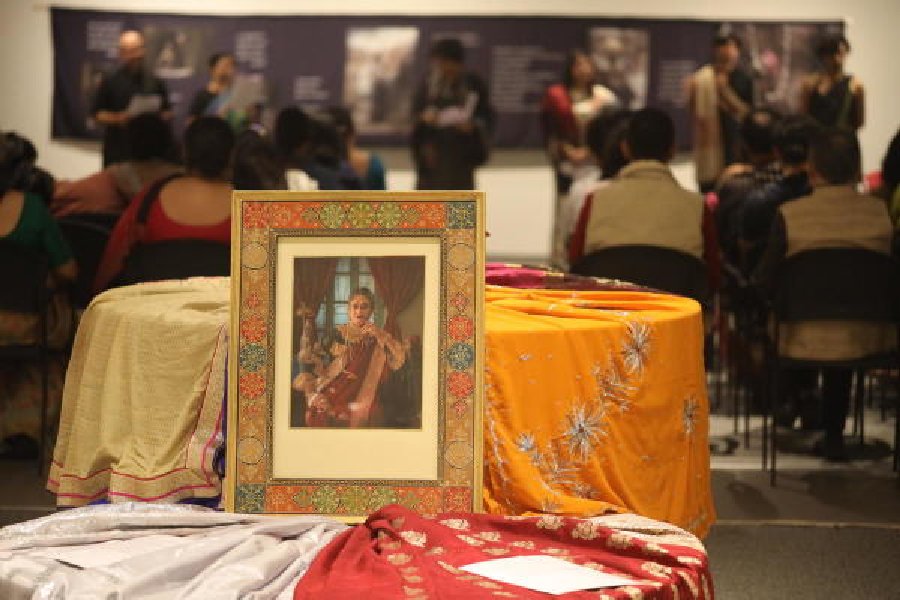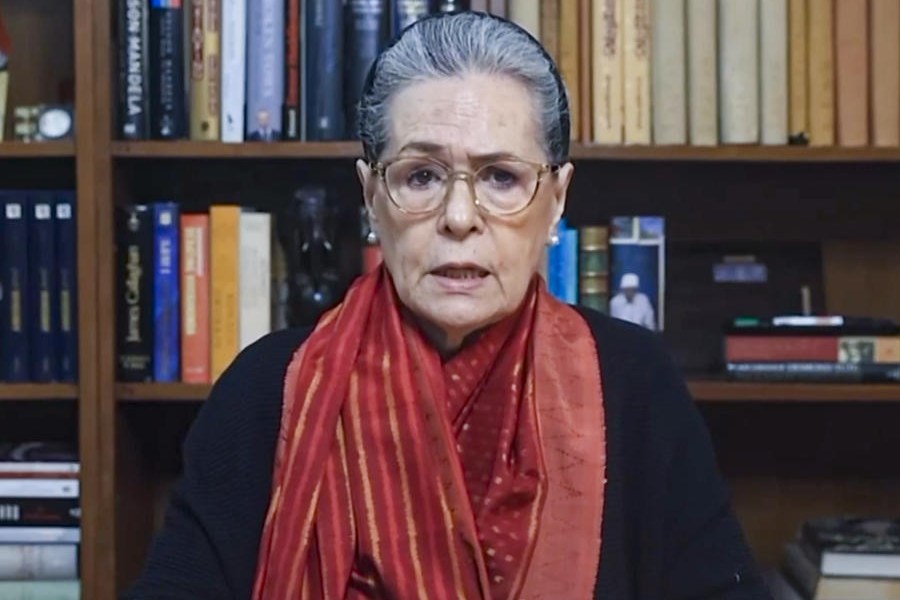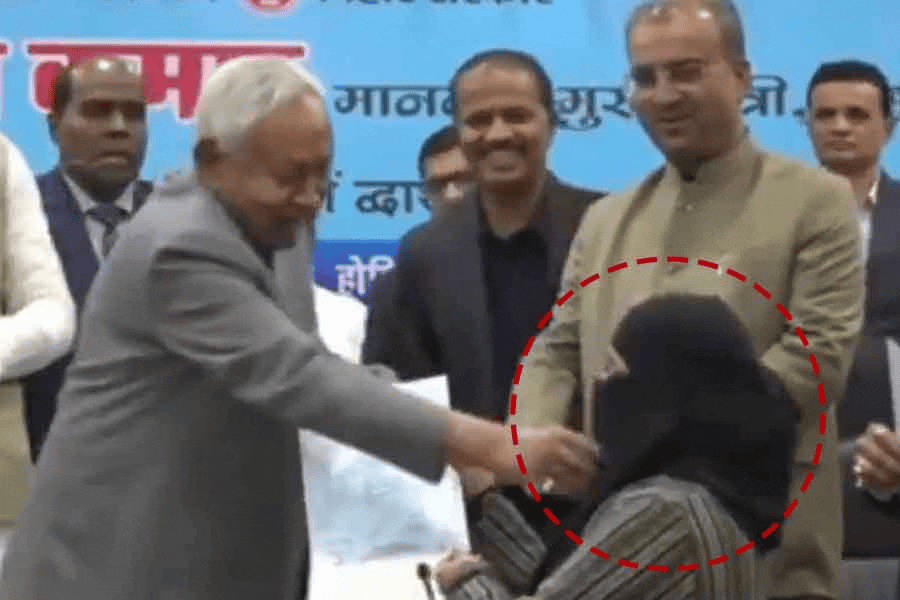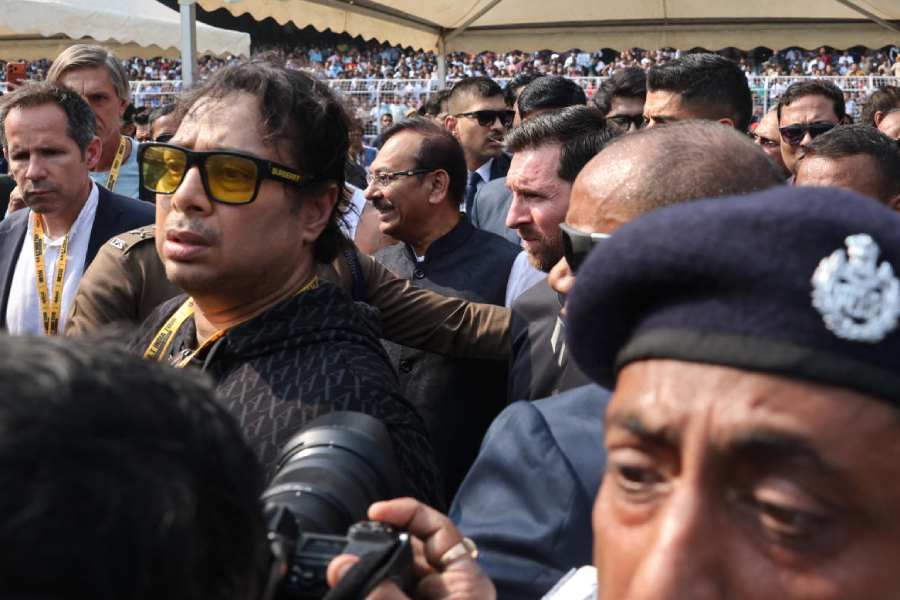Sudipa Chakraborty was packing for an outstation meeting. Sudipa was assigned male at birth but as time went by, she began to explore her own gender identity. She tells The Telegraph, “I began dressing in traditional women’s attire, starting with subtle makeup.” The social worker and activist continues, “At first I was careful not to be noticed but over time my love for dressing up grew, notwithstanding the resistance from my mother.”
And we are back talking about the night before the outstation meeting. When Sudipa’s mother saw she had thrown into her suitcase a petticoat and a blouse, she went and fetched one of her saris and handed it to her daughter. “In that moment, I felt an overwhelming sense of acceptance,” says Sudipa, who showcased the same sari at an exhibition in Calcutta titled Queering the Six Yards.
The exhibition organised at the Kolkata Centre for Creativity was inspired by Vikramaditya Sahai’s project titled Mummy Ki Sari. Queer activist Sahai started an Instagram project in 2015 that encouraged mothers to pass on saris to trans and gender non-conforming individuals.
Sahai says, “I used to receive a lot of saris from friends’ mothers. Also, many people used to ask me for saris. Ultimately, I ran out of saris to give. That is when I started the project.” She collected saris from mothers who had no reservations about giving their treasured tants and silks to trans people.
Sahai sent a trunk full of such saris for the exhibition, says Debjyoti Ghosh who has curated it. Ghosh, who is a human rights lawyer and an academic, adds, “Vikram sent these saris and several trans women here have picked them up. They have never been to sari shops because they find it traumatic. But this space is the safest place. Whatever work Vikram set out to do, it has been achieved. Four saris have gone to the right people who would otherwise never had access to such saris.”
Many of the saris on display come with epiphanies attached. Says Ghosh, “When a trans man was forced to wear this blue and beige sari, he felt he was not being seen. It was his mother’s sari, so there is a conflict of emotions, the duality is there.”
Pointing to a sari in a glass case, Ghosh says, “The piece there is pure silver zari, the most expensive piece. Yet that sari carries the least emotions.” It belonged to the present owner’s grandmother.
A mulmul sari with motifs of the Argentina-Brazil match is probably the most eye-catching display. Its owner is Varun Rana, who is a fashion commentator and creative consultant.
The football players immediately took me back to the sports field at my school, which doubled as the space where my classmates had free rein to tease, harass and mock me. The football jamdani sari links two of my strongest childhood memories — loving the sari and hating football. And I realised that I don’t need to continue hating something that pained me in the past, nor to keep thinking of the sari as some fantastical
refuge that will shield me from the taunts of the world,” says Rana.
Fashion designer Indroneel Mukherjee lent to the exhibition one of his treasured pieces, a sari his mother had purchased from Canada in 1984. Mukherjee says, “This sari is a perfect example of her Punjabi side, flamboyant and sparkly. Those days these printed florals with foil print were just entering the market.” Mukherjee tells the story of a closed-door Halloween party at a friend’s place he wore the sari to. “I loved myself in it and discovered my non-binary gender expression. Since then there was never looking back to gender-fluid experimentation dressing in my wardrobe,” says Mukherjee.
Sahai’s mother and grandmother triggered his sari love. He says, “It was like Mummy ka khana; how they presented themselves to the world interested me. And I started appreciating the handloom and the weaves.”
Sahai wore a sari for the first time in 2013. It was the day the Supreme Court upheld the constitutionality of Section 377 and he was protesting the decision.











